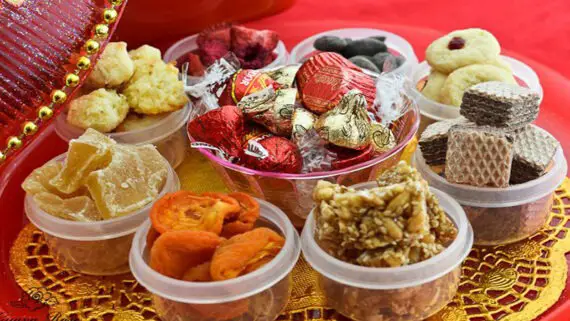Chinese Food Tray Of Togetherness is a project by Goh Ki Sim and students at the National Taiwan University of Arts.
It is an interactive installation that consists of simple materials such as paper, wood, string, bottle caps, and clothing clips used to create a tray given out in Taiwan’s temples during special holidays.
The tray has been used for more than 10 years. The project started with a few cardboard trays, which were later replaced by folding pieces of paper and then finally replaced by this beautifully crafted wooden tray.
What is Chinese Food togetherness?
It is a project that has been going on for 10 years. It started with a few cardboard trays, which were later replaced by folding pieces of paper and then finally replaced by this beautifully crafted tray.
A beautiful tray with many stories
The Chinese Food Tray Of Togetherness is folded paper, wood, string, and bottle caps. Some paper items are held together by buttons for better stability.

The project is interactive and is significant from what the owner sees, hears, and smells. A tray full of stories, ideas, and emotions is given out in Taiwan’s temples during special holidays.
It aims to promote Chinese culture among the younger generation scattered around the world. It encourages them to come back to Taiwan to visit, meet with their family and friends, eat together and talk about life stories.
You may like: What Chinese Food Can I Eat With Gout: Amazing 10 Chinese Food That Won’t Hurt My Arthritis
Making a tray for people
The project has been going on for more than 10 years in Taiwan’s temples. The model has been tested several times before it was put into use.
It was successfully proved through various trials of observing the reactions and observations of people who received the food trays at temples during particular holidays in Taiwan’s history.
When it is Chinese New Year, Chinese people typically eat a variety of dishes together to celebrate the coming of a new year.
It is a long day; they usually eat their meals at night. Each tray was decorated with traditional Chinese characters. The characters have meaning to the gift receiver.
The tray includes four sections, roughly divided as follows:
There are six types of food that people usually eat for Chinese New Year which are:
1. Cold dishes (usually noodles or dumplings)
2. Hot dishes (such as braised pork shank)
3. Vegetable dishes (such as chives and Chinese broccoli)
4. Noodles and soup
5. Fruit dishes (such as pineapple, jujube, Chinese red dates, and Chinese persimmon)
6. Drinks such as tea and coffee
The tray above has the character for “[be sure to] eat together during the New Year” written on it, with the characters for “because you are my family” written underneath it.
Why did you start this project?
We started with a few cardboard trays that were later replaced by folding pieces of paper and eventually replaced by this beautifully crafted tray.
When asked about why he started the project, Sim said it was because people are encouraged to share food trays during special holidays like Chinese New Year in Taiwan’s temples.
They would give them out to people hoping that they would come back to Taiwan for a visit, meet with their family and friends, eat together, and talk about life stories.
Where did this idea come from?
A similar tray inspired Sim himself that he had seen in a temple in Hong Kong. It was made of simple materials like paper, wood, and string.
He did not know at first if his project was the same as the one that he saw, but the more he thought about it, the more he realized that it was indeed so.
What makes it unique?
Sim said many things made his project special. For example, as he was thinking of how to make something enjoyable, it occurred to him that he could make something that is not usually used in a temple.
In shamans’ temples, the cooks typically use everyday utensils such as paper and bottles. This can be seen as making something out of nothing which comes from space.
It uses ordinary paper, which may be recycled but is still considered trash or waste in a traditional Chinese context.
Who are your models?
The model for this project is made up of students at the National Taiwan University of Arts. A tray is full of stories and emotions. The Chinese food Tray of Togetherness comprises folded paper, wood, string, and bottle caps.
It is an interactive installation that consists of simple materials such as paper, wood, string, bottle caps, and clothing clips used to create a tray given out in Taiwan’s temples during special holidays.
Conclusion
The Chinese Food tray of Togetherness is a project by Goh Ki Sim and students at the National Taiwan University of Arts.
It is an interactive installation consisting of simple materials such as paper, wood, string, and bottle caps used to create a tray.
The project started with a few cardboard trays, which were later replaced by folding pieces of paper and then finally replaced by this beautifully crafted wooden tray.
1 thought on “Chinese Food Tray Of Togetherness: Chinese New Candy Box”